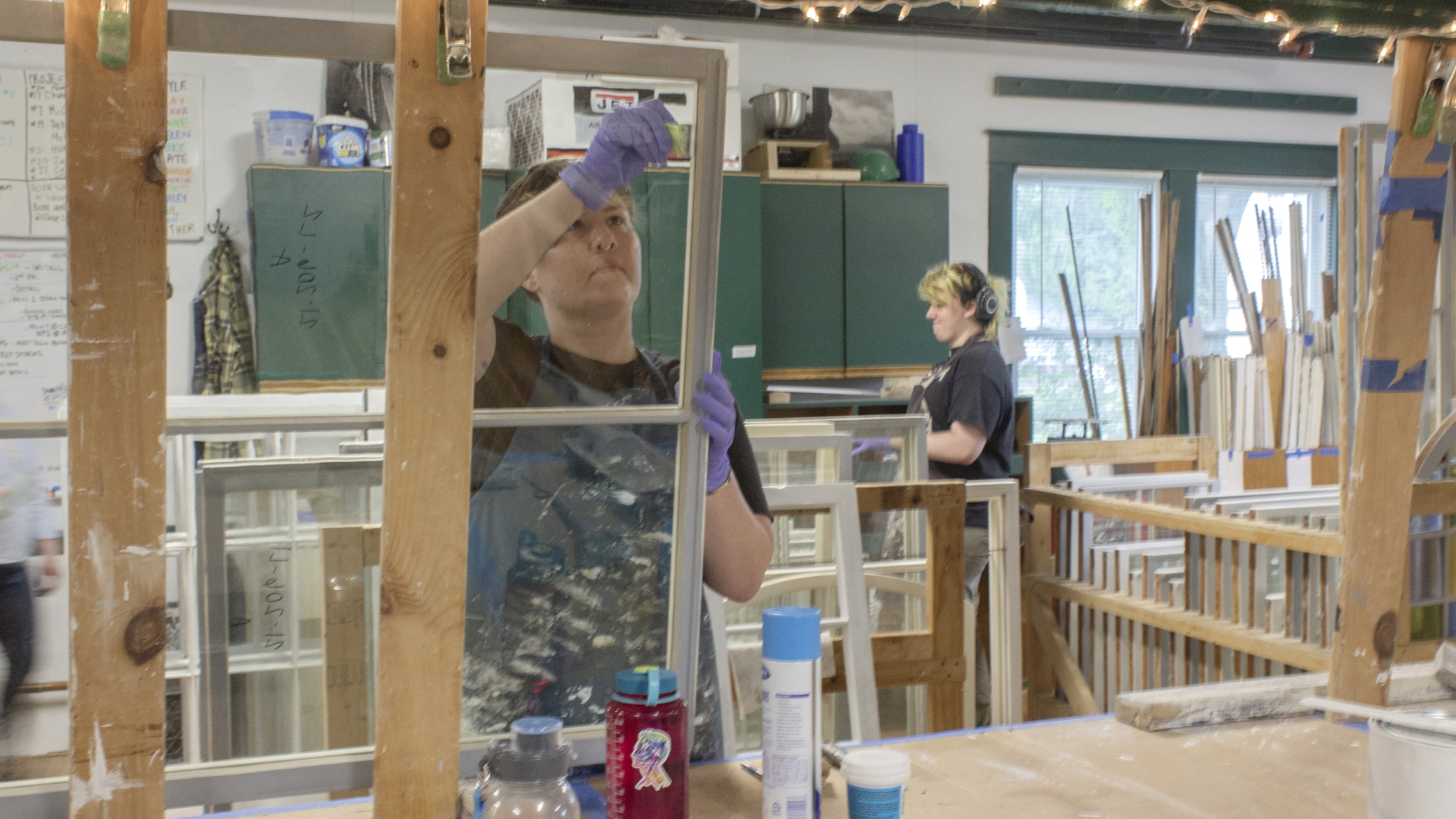Heather Hendrickson | Maine Preservation & Bagala Window Works

"The knowledge I acquired in the first year of our program helped me navigate this fellowship successfully."
Stuart Weitzman School of Design
102 Meyerson Hall
210 South 34th Street
Philadelphia, PA 19104

"The knowledge I acquired in the first year of our program helped me navigate this fellowship successfully."
This summer I was a Patricia Anderson Fellow with Maine Preservation. This fellowship consisted of nine weeks work and was divided into two separate and distinct parts. I spent the first five weeks working in Westbook, Maine for Bagala Window Works (BWW), a highly respected historic window and door restoration company. The remaining four weeks I spent working in Yarmouth, Maine for Maine Preservation (MP), a statewide non-profit historic preservation organization. There, I dove into researching and compiling Maine’s Most Endangered Historic Places list, an annual list that promotes advocacy for substantially threatened historic places across the state.
BWW is the gold standard for historic window and door restoration in Maine. One reason that I specifically applied for this Fellowship was to get hands-on experience in the field working with building fabric. Being a student in the Preservation Planning concentration I was worried I would leave Penn without this privilege. For five weeks I was introduced to all things “sash.” I was trained in Lead Paint Abatement, logging many hours in the containment room. I worked side by side with every member of the staff and was able to ask a lot of questions. The floor manager took me through each step of the process from when a battered, peeling, and lead paint-filled sash walked through the door until it left the shop, looking as glorious as it must have looked originally (minus the lead paint). I had my hands in glass removal, leaded glass removal, scraping, sanding, detailing, priming, painting first coat and the even trickier second coat after the glass had been reinstalled into the sash. The last three days I was able to go on site and help reinstall the finished sash for a project, including hanging and tying the weights in the window pockets! This part of my Fellowship gave me a deeper understanding and appreciation of historic sash windows. The skills and knowledge I acquired were mostly new but built off information from American Architecture (HSPV 521), Documentation I (HSPV 600), and American Domestic Interiors (HSPV 531).
The second part of my Fellowship involved working with MP. I learned a great deal about the preservation field in Maine and was able to network with the MP Board of Directors and Greater Portland Landmarks. I participated in MP weekly meetings and meetings with the Board. I was able to get a glimpse inside the daily operations of a small historic preservation organization. MP releases an annual Maine’s Most Endangered Historic Places list, and my job was to start compiling this list. I reviewed nominations from the public and created a summary citation for each site. I also researched nominations from the staff. This work entailed contacting local stakeholders and organizations to see what the precise threat to these places is, what work has been done so far to preserve these at-risk sites, and what work still needs to be done that the greater public can assist with. I used the extensive skills I learned in Documentation I (HSPV 600) for in-depth research as well as knowledge from Public History of the Built Environment (HSPV 534) for place advocacy and organizational interaction. As a bonus I was able to participate in site visits with MP to easement and Protect & Sell properties, where I took photographs, a skill learned in Documentation II (HSPV 601).
The knowledge I acquired in the first year of our program helped me navigate this fellowship successfully. I also learned so many new skills, all while adventuring around the beautiful state of Maine.